Warsaw, Poland
Mike and I are currently in Warsaw, Poland. We had a few problems finding somewhere to stay as we arrived on October 31 and many of the campgrounds closed at the end of October. The one that was open could not handle an RV our size. We ended up half an hour out of town at another truck stop. It has been surprisingly quiet. There is water available and it feels secure, so we are just going to stay here for a few days. There is a huge amount of new road construction going on in Poland and there are lots of renovations happening in Warsaw itself. Thinking of renovations, UNESCO has designated the historic centre of Warsaw as one of its World Heritage Sites. What makes this so surprising is that none of the buildings predate WWII. Some of the buildings were destroyed early in the war when the Nazi’s bombed Poland but most of them were destroyed in 1944. In August 1944, during the Warsaw Uprising the Nazis deliberately annihilated Warsaw reducing it to ruins. More than 85% of the historic centre was completely destroyed. After WWII the Poles began a major project to reconstruct the urban plan, together with the Old Town Market, townhouses, the circuit of the city walls, the Royal Castle and important religious buildings. When early plans were missing they used some very detailed paintings to help with the design. The city has been rebuilt as it was largely in the 17th and 18th centuries. UNESCO has a short video, http://whc.unesco.org/en/list/30/video, that shows how the city looked before and after reconstruction. It is absolutely amazing what the city and the country has done.
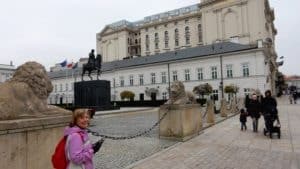 I find this history quite fascinating and have included just a little of Poland’s 20th century history at the end of this article for anyone who is interested. Something that I now find very surprising is that the two subjects I hated the most in high school were history and geography. Look at me now!
I find this history quite fascinating and have included just a little of Poland’s 20th century history at the end of this article for anyone who is interested. Something that I now find very surprising is that the two subjects I hated the most in high school were history and geography. Look at me now!
Luckily the threatening rain held off and we spent our first day in Warsaw walking around using the audio tour guide app that I mentioned previously. Mike and I both quite like this way of seeing the historic portions of a city. One thing that you can’t help but notice is that there are pigeons everywhere. It isn’t like the Piazza San Marco where most of the pigeons are in one main square, here you find flocks of them all over. Like many cities in Europe there are parks and green spaces throughout Warsaw.
Day two (today) has been pouring rain. I got up and refused to leave the RV all day. I wanted a day off to sit in warmth and comfort and play computer games and write this article. Mike has taken the car and left me in peace and quiet.
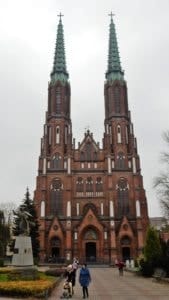 It turns out that yesterday was a Polish National holiday for All Saints Day. This meant that places like the Royal Palace were closed for the day, but we plan on touring it tomorrow. Mike might complain that I want to go inside and look at every church we pass but he is fascinated with church exteriors. The photographs on the web site are only a few of the ones Mike has taken. You wouldn’t believe the number of pictures of church exteriors in Northern Europe that we have ?.
It turns out that yesterday was a Polish National holiday for All Saints Day. This meant that places like the Royal Palace were closed for the day, but we plan on touring it tomorrow. Mike might complain that I want to go inside and look at every church we pass but he is fascinated with church exteriors. The photographs on the web site are only a few of the ones Mike has taken. You wouldn’t believe the number of pictures of church exteriors in Northern Europe that we have ?.
It is now our third day in Warsaw and the sun is trying to shine. One of the churches we visited today was St. Hyacinth’s Church. It had a plaque on it that read “During the Warsaw uprising this church served as a hospital. The hospital was actually located in the crypt beneath the church. The church itself used to provide shelter to the civilian population during the bombing blitz. In mid-August 1944, the church was bombed and destroyed. Approximately a thousand people were killed. The hospital managed to continue to function in the ruined building until it was taken by the Germans on September 2. The invaders firstly executed the all the medical staff and then blew up the hospital burying alive about 500 people under the rubble. After the war, it turned out to be impossible to exhume the remains of all the victims. Therefore, the ruined crypt was totally covered with a marble floor with the remains buried underneath.”
There is no question that spending time in Europe means seeing a lot more of the after effects of the horrors of war and what it has done to cities and what was done to the inhabitants. Visiting places like St. Hyacinth’s, seeing Holocaust Museums and large-scale monuments with barbed wire and statues certainly makes one think, although interesting it isn’t always enjoyable. Mike feels that if we are going to be close to Auschwitz we really can’t avoid going. At the moment I am thinking that he will be going on his own. Don’t get me wrong, it isn’t all depressing, seeing what people have accomplished is great. Warsaw, at least the historic centre, is lovely – much nicer than I was expecting.
Another of the reconstructed buildings open for touring is the Royal Castle. It is set up on three floors. The basement contains an exhibit of the history of the castle. It is very well done. There are three rooms, each with a short movie (English subtitles). The first room has a film that depicts the Golden Age of the castle before the 20th century. The next room shows the annihilation of the castle during WWII and the third room is the reconstruction. The top floor shows the interior of the castle the way it was. They have done an outstanding job of huge paintings on the ceilings, ornate walls and carvings and furnishings. The middle floor has been turned into an art gallery. In this art gallery where the two best Rembrandt paintings that I have ever seen including during our tours of the Hermitage and the Louvre. My favourite was simply called “Girl in a picture frame”. The pictures had obviously been cleaned up. With Rembrandt’s penchant for light surrounded by dark I often find that the dark, over time, loses its detail. Rembrandt has never been my favourite artist but if his paintings looked like these originally I could possibly be convinced to change my mind. Interestingly they also showed full size x-rays of the paintings where you can get an idea of what had originally been painted on the canvas and then removed or painted over. The x-ray of the “Girl in a picture frame” depicts a different girl wearing a different hat. After this we accidentally ended up touring a Museum of old (mostly Persian) rugs. I don’t think rugs are a huge fascination for Mike or I ?.
Our visit to Warsaw was very enjoyable. We learned a lot. I had expected a much darker, square Soviet city and was extremely impressed with the restored historic centre. Around the outskirts we saw some of the grey Soviet style buildings. We often don’t see much of these cities beyond walking distance of the city centre. When Mike and I say that we really like a town we are not basing this on living there but mainly on the tourist, old town, area.
Mike and I leave for Krakow tomorrow and I am really looking forward to seeing that city.
For those, like me in high school, with no interest in history you can stop reading now. Below I have included snippets about three main events that I found very interesting in Warsaw’s history: the Miracle on the Vistula (WWI), the Warsaw Uprising (WWII) and Warsaw’s reconstruction.
Polish History Snippets largely from the Internet:
Pre-World Wars:
For many centuries Poland was a strong military independent country with a monarchy. Its political system was very modern for the time with strict checks upon the monarchy and a system that was a precursor to democracy. During the late 18th century it entered a period of military and economic decline and was partitioned among its neighbors, Austria, Prussia and the Russian Empire. When those empires collapsed after World War I, the Poles took advantage of the chaos to resurrect their nation.
WWI and the “Battle of Warsaw” or the “Miracle on the Vistula”
Poland regained its independence through the Treaty of Versailles in 1919. As a country it had the unfortunate fate to be wedged between Germany and Russia. In 1920 Lenin believed that if he took over Poland and made it communist he could create a Red Bridge to Western Europe and in particular to Germany which he thought was ripe for a Communist revolution.
During the Battle of Warsaw, the Polish army was isolated and greatly outnumbered. Its defeat was a foregone conclusion and the independence of only two years looked like it was going to be lost again. Absolutely unbelievably on August 15, the Assumption of Mary, a small group of weary soldiers led by an amateur gave total defeat to the Russian army. This was considered nothing short of a miracle and became known as the Miracle on the Vistula (river through Warsaw). It was even referenced by this name by Pope John Paul II when he visited his home country. As a result of the Miracle on the Vistula, Polish independence was preserved and the Bolshevik Revolution was stopped at the Polish border.
Think of it, Europe could have been radically altered. If the Red Army had entered war-torn, revolution-prone Germany in the aftermath of the Great War, a Soviet dictatorship and communism may well have spread across Western Europe.
WW2 and the Warsaw Uprising
Approximately six million Polish citizens perished during World War II, more than 20% of the pre-war population. Most were civilians killed during the occupation by Nazi Germany and the Soviet Union. Warsaw was heavily bombed by Germany in 1939. While Germany was bombing Poland from the west the Soviets invaded, without a declaration of war, from the east. Poland surrendered and Germany and the Soviet Union formed a treaty to split Poland between themselves. Hitler urged his forces to “kill without pity or mercy all men, women and children of Polish descent or language” in the coming “invasion and extermination of Poland”.
In 1941 the Polish underground resistance planned to liberate Warsaw from German occupation. The uprising was timed to coincide with the retreat of the German forces from Poland ahead of the Soviet advance. The Red Army was within 6 miles of Warsaw when the Warsaw Uprising operation was in process. To quell the insurrection the Germans reinforced their local garrison with army, police, special SS and Luftwaffe units. Some of the units carried a notorious reputation for their cruelty and atrocities. The insurgents managed to capture the City Centre and several other districts. Then contrary to all expectations, the Red Army remained in their positions on the outskirts of the city and refused their assistance. The German forces seized the initiative. In retaliation for the insurrection German units began a program of mass extermination aimed at Warsaw’s civilian population and mass destruction. Soon, the city became an inferno and the resistance started to weaken. When the Red Army refused to cooperate, the Polish forces surrendered. The insurgents became prisoners-of-war and the population of Warsaw was deported, some to labour and concentration camps. The deserted city was looted, destroyed, and burned.
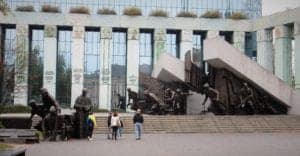
The Uprising was fought for 63 days with little outside support. It was the single largest military effort taken by any European resistance movement during World War II. Winston Churchill pleaded with Stalin and Franklin D. Roosevelt to help Britain’s Polish allies, to no avail. At the start of the uprising Stalin ordered the Red Army to temporarily halt combat operations, enabling the Germans to regroup and defeat the Polish resistance. It appears that Stalin wanted the Polish resistance to be crushed. According to many historians, a major cause of the eventual failure of the uprising was the almost complete lack of outside support and the late arrival of that which did arrive.
Physical damage to buildings and property in the wake of the Warsaw Uprising was immense. This differed from that in much of Western Europe because of the extent to which the destruction of buildings of cultural and historic interest was deliberate and systematic, rather than being incidental to the course of war action. Allied Commander General Eisenhower concluded, “I have seen many cities destroyed, but nowhere have I been faced with such destruction”.
Reconstruction:
After WWII Poland regained their independence. The communist Polish United Workers’ Party came to power and Poland became part of the postwar Soviet sphere of influence. Poland’s new communist government embarked on a massive program to reconstruct the city. For the historic centre they decided not to create a new modern precinct, or even to restore it to as it had been immediately before the War. Instead, they decided to reconstruct it according to how it had looked in its “golden age”. Given that this was almost 200 years before, this posed an obvious question – how could anyone really know what it looked like in those pre-photographic times? Fortunately, however, there was a ready answer — the amazing survival of an extraordinary collection of over 20 panoramic paintings, commissioned by Poland’s last king and created by the eighteenth century Venetian artist, Bernardo Bellotto. These paintings provided a vivid view of Warsaw at the critical time, by someone who was actually there.
The difference between the end of the war and now is amazing. The video mentioned earlier http://whc.unesco.org/en/list/30/video, shows the city at the end of the Warsaw Uprising when the Germans just demolished the city building by building and what it looks like today.
And so, my little modern-day history lesson comes to an end. When I was a child at school we had libraries and the encyclopedia Britannica. I remember taking buses and trains to get to downtown Toronto when I was in high school to do some specialized research for a school project. For all the social problems caused by the internet it is the most marvelous collection of information available to all of us.

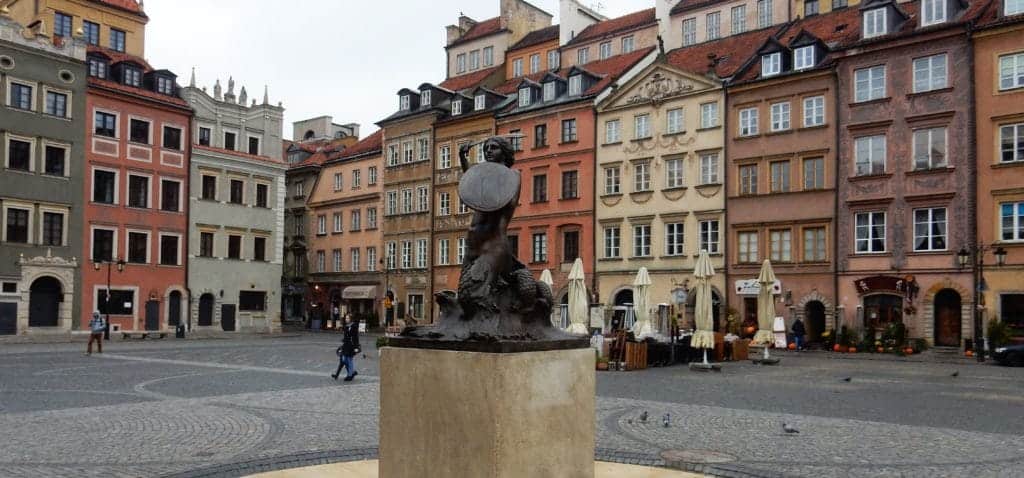
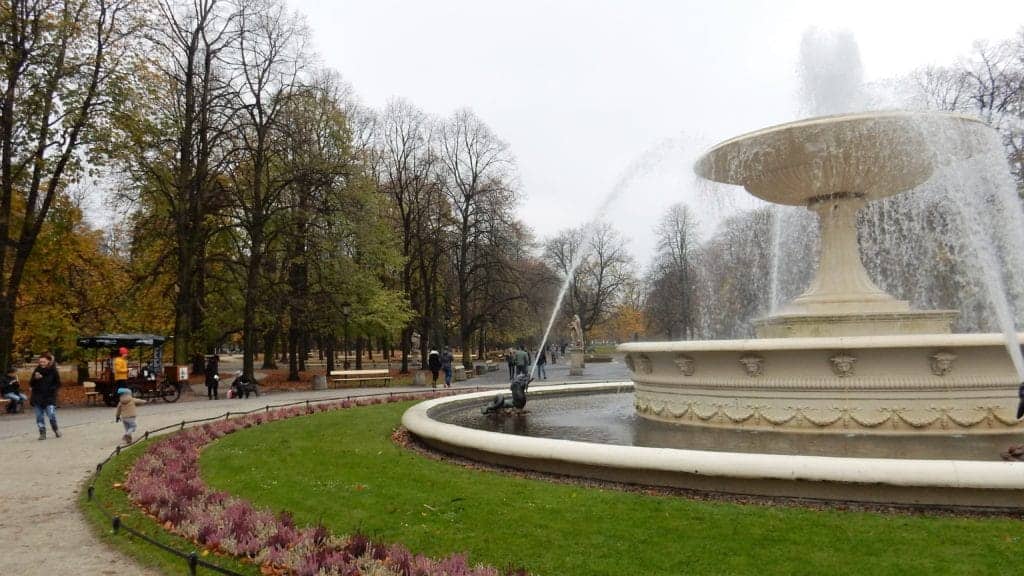
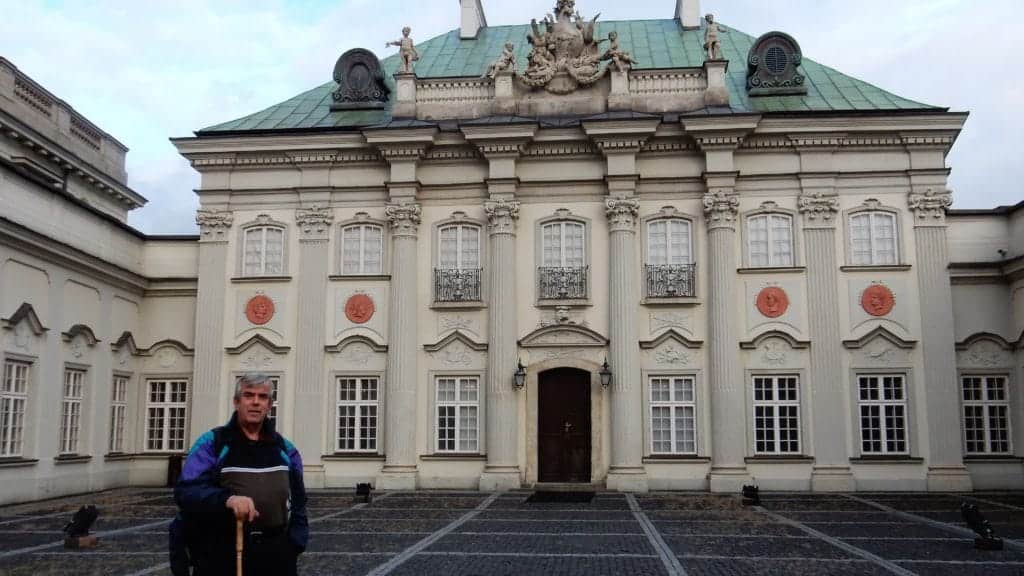
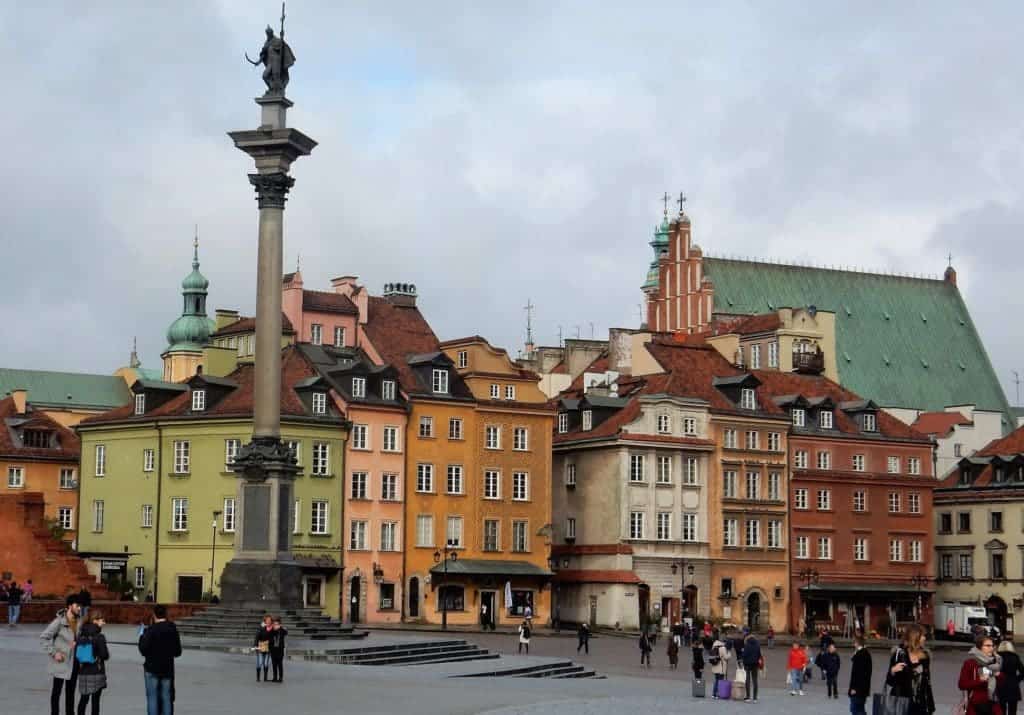
Leave a Reply